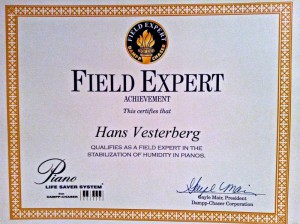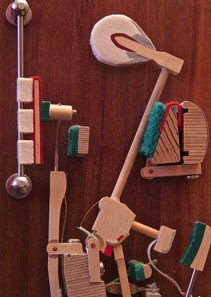Environment
A piano consists of about 10.000 parts. Most of them are made of wood.
Since wood is an organic materia, it is easy to understand that a climate with small changes in temperature and humidity is by far best for your piano.
In Scandinavia we have dry, cold winters and humid, warm summers. The extreme seasons affect the moisture content in our instruments. Tuning stability and a reliable function of the action are affected solely by the change of this moisture content.If you just have bought an expensive instrument it would be a good idea to consider a device for climate control. My advice to you is:
Piano Life Saver System.
It creates a micro-climate around your instrument and near the soundboard that will keep the humidity around 42% at evert time of the year!
I happen to be a certified field installer of this system. (See below)
[
Tuning
Your piano should be tuned once a year at least. This is a regular maintenance even if you don’t play for a long time. Regular tuning intervals will keep the piano at the right standard pitch, 440. A professional tuner can also see if there is a need for regulation in order to prevent damages.
Action
The action is the heart of the piano. It needs to be surveyed since a wrong calibrated action can wear out parts more quickly. Bad function means loss of control and power. It is also often the source of noise and sticking keys.
Cleaning
You can clean the keys with a soft cloth and a mild detergent. Clean a few keys at a time and wipe them dry immediately. Vacuum cleaning inside the piano should done by a professional.
Resumé
Be kind to your instrument!
The best place for your piano is where there is as little change as possible in humidity, temperature and away from direct sun light. Heating sources are also a problem. These factors affect the tuning stability, the function of the action as well as the look of your instrument.


